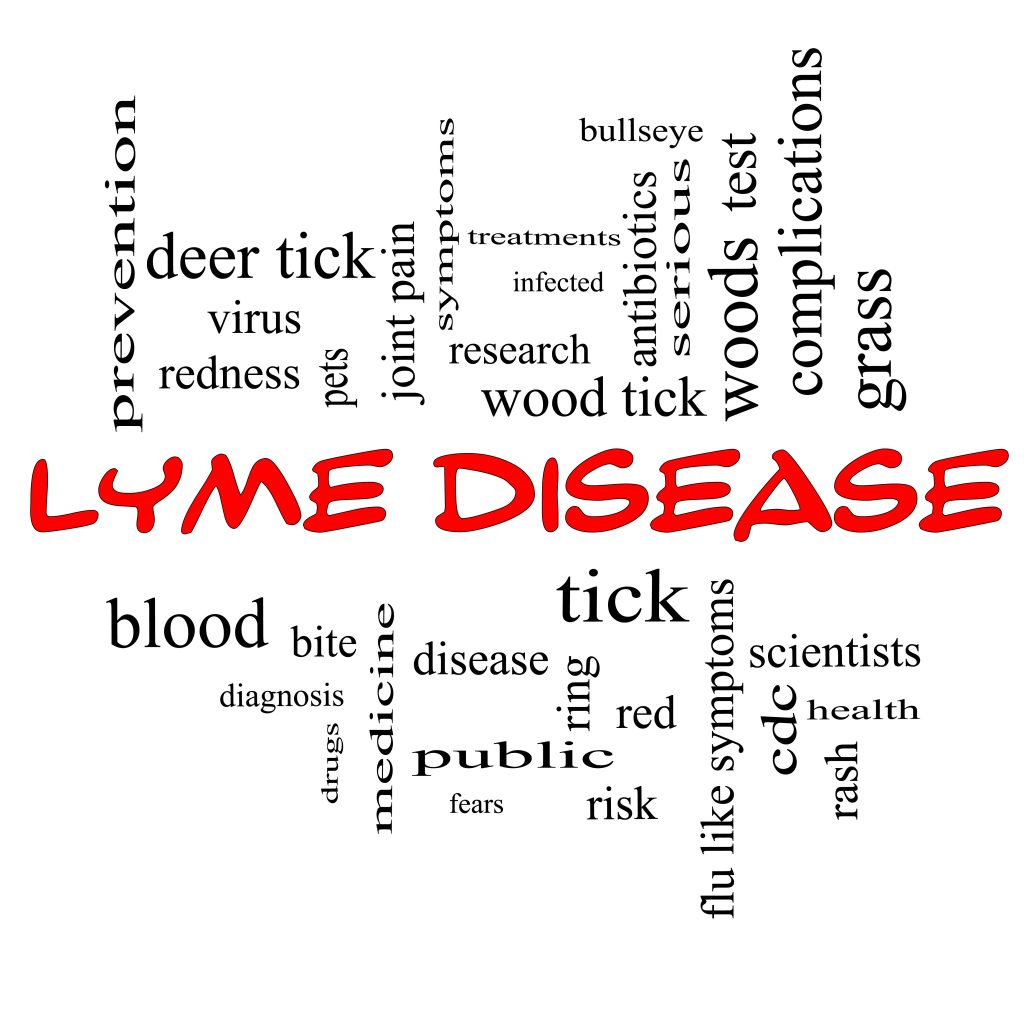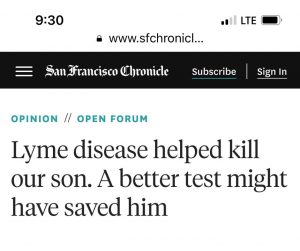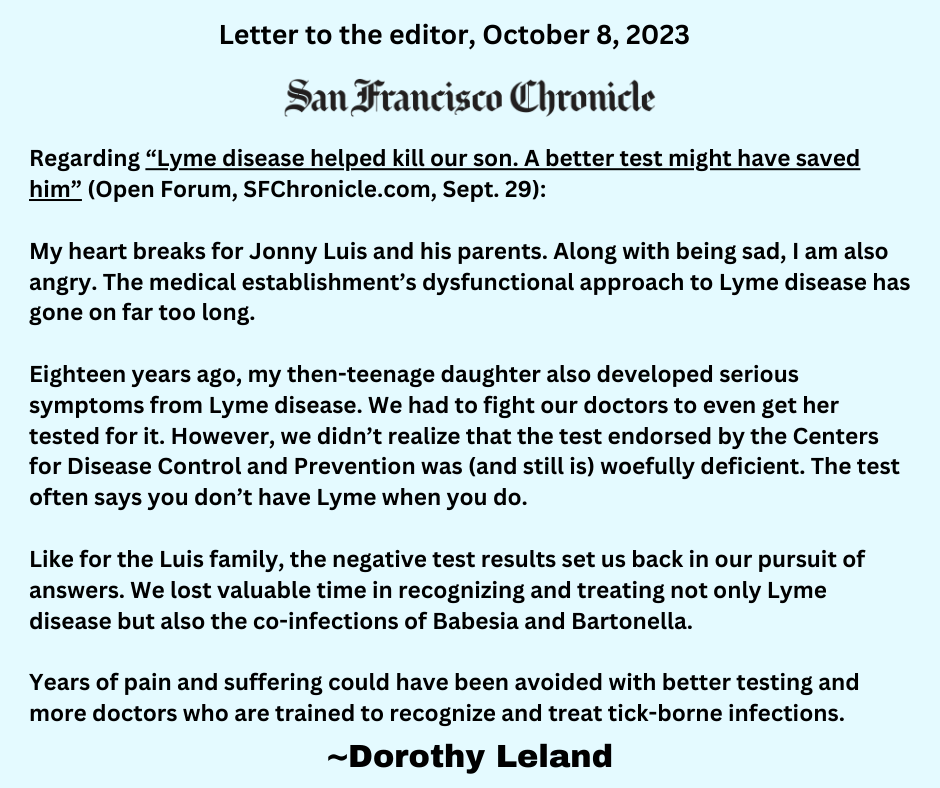“Standard” Lyme testing once again proves fatal

I woke up this morning to see a heart-wrenching headline in the San Francisco Chronicle:
Lyme disease helped kill our son. A better test might have saved him.
The “Open Forum” article was written by two grieving parents, Jose and Monica Luis, of Novato, California. With great sorrow, they recount what happened to their 37-year-old son Jonny, after he’d moved to Costa Rica and developed grave health problems. His parents write:
He returned to California…having lost 60 pounds and feeling extremely weak and depressed, with a multitude of symptoms such as joint pain, digestive issues and asthma, among others. Many of these symptoms are consistent with Lyme disease. His doctors at Kaiser Permanente tested him for Lyme disease twice (in March and May 2022), and both tests came back negative. We trusted these initial test results — which turned out to be a grave mistake.
 Dysfunctional medicine
Dysfunctional medicine
Like thousands of other people who are victims of the medical establishment’s dysfunctional approach to Lyme diagnosis and treatment, Jonny and his parents were left adrift to figure out how to deal with his rapidly declining health.
They visited many practitioners and explored a wide variety of procedures—including ozone therapy, endoscopies, colonoscopies, bladder treatments, chelation therapy, herbal medicine and more. However, they found no clear diagnosis and certainly no cure.
Finally, they consulted a doctor in Florida, who suggested that Jonny be tested by the specialized laboratory IGeneX. (Ironically, it’s located in their own backyard, the San Francisco Bay Area.) The IGeneX tests were positive for Lyme disease and the co-infection Babesia.
Unfortunately, by that time, Jonny’s body was weakening more with each passing day. His parents write:
He developed a fungal infection in his digestive system. In his final days, his acid reflux became so severe that he could no longer eat. He experienced constant pain throughout his body, insomnia and rapid deterioration of his mental health. His body and mind could no longer endure the suffering. He took his own life on June 10.
This makes me sad–and angry
After reading their story, I am of course, deeply saddened for Jonny and his family. But more than that, I am angry. This is a problem that has gone on far too long.
Eighteen years ago, my then-teenage daughter also developed serious symptoms from Lyme disease. We had to fight our doctors to even get her tested for it. However, we didn’t realize that the CDC-endorsed testing protocol was (and still is) woefully deficient. Their test often says you don’t have Lyme when you actually do. Like for the Luis family, the negative test results set us back in our pursuit of answers. We lost valuable time in recognizing and treating not only Lyme disease, but also the co-infections Babesia and Bartonella
Blessedly, we did not have the sorrowful outcome that the Luis family must bear. But years of pain and suffering could have been avoided with better testing and more doctors who are trained to recognize and treat tick-borne infections.
Losing valuable time
According to the registry MyLymeData, which studies patients with persistent Lyme disease, delayed diagnosis is the norm—not the exception. Most respondents had to see five or more doctors over three or more years before receiving a Lyme diagnosis. Delays like this mean you don’t get treated promptly, letting the infection run rampant throughout your body, wreaking all kinds of havoc.
As Jose and Monica Luis wrote: At the time, we were unaware of how inadequate and unreliable conventional testing for Lyme disease is. Had doctors known and shared basic information about more advanced testing options, we believe our son would still be alive today.
There are more effective options for Lyme disease testing than what the CDC and most doctors currently advise. And there’s a push to develop even better ones.
But in the meantime, people who unknowingly have Lyme disease are going to their doctors, being given a crummy diagnostic test, and being incorrectly told they don’t have Lyme.
And that’s bad news for everyone.
TOUCHED BY LYME is written by Dorothy Kupcha Leland, President of LymeDisease.org. She is co-author of When Your Child Has Lyme Disease: A Parent’s Survival Guide, and of Finding Resilience: A Teen’s Journey Through Lyme Disease. Contact her at dleland@lymedisease.org.
UPDATE
I sent a shortened version of this blog to the San Francisco Chronicle as a letter to the editor. It was published on October 8. Here’s what it said:






















We invite you to comment on our Facebook page.
Visit LymeDisease.org Facebook Page